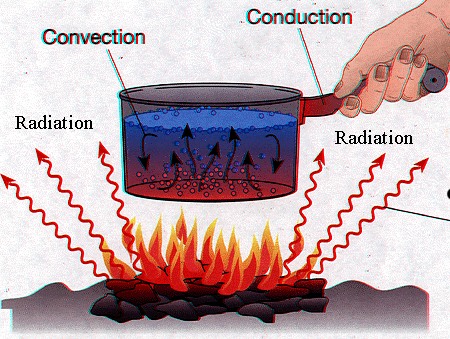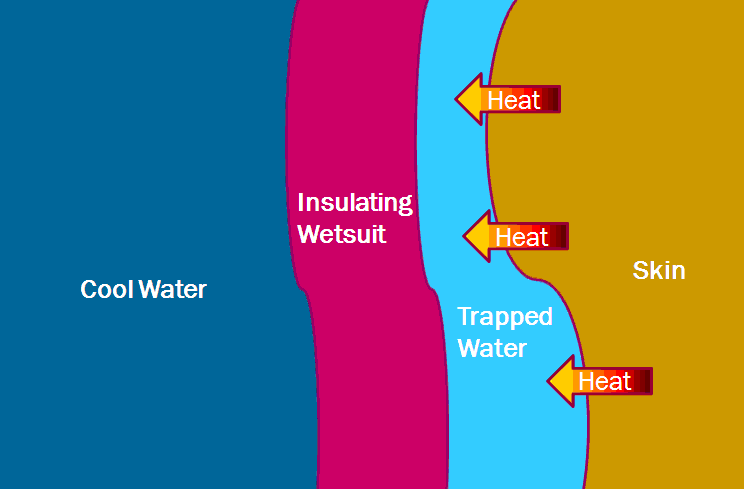| Conduction Conduction is the transmission of heat due to direct contact. For example, if you drop an egg into boiling water, when you remove the egg, it is warm. |
| Convection Convection is the transmission of heat via fluids, in this case, heat from the body via water. Fluids near the body become warm via conduction. As the fluids become warmer, they become less dense and rise away from the body in respect to the surrounding colder fluids, allowing the colder fluids to take their place. |
| Radiation Radiation refers to the transfer of heat via electromagnetic waves. An example of this is the heat the you feel from the sun. While diving, you may feel heat due to radiation if you hold your hand in front of a high intensity underwater light such as those used in film. |


